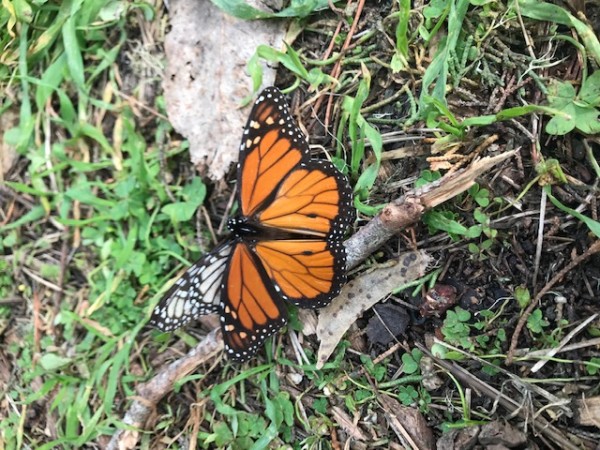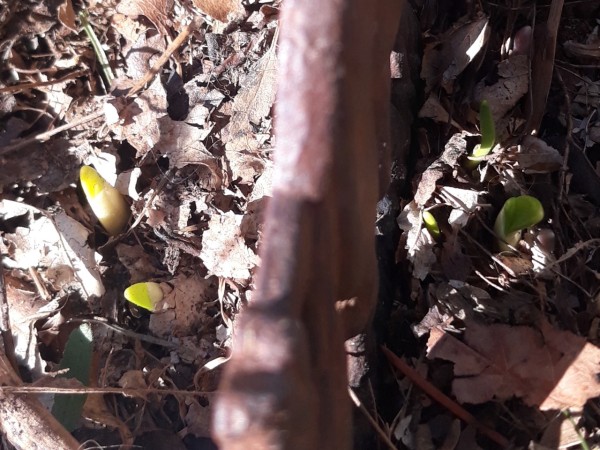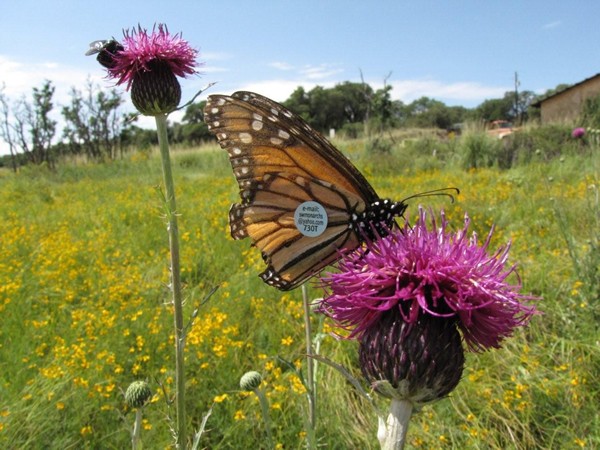Letter From Gail Morris: Western Monarch Spring 2023 Report #5
Western Monarchs Update
The recent winter siege of flooding rains, winds and feet of snow returned to California this week, blasting the efforts of monarchs to leave on their spring migration. Cold, wet weather has kept many monarchs at their winter groves while record snows packed the Sierra Nevada Mountains further east. This week’s forecast is for a tropical atmospheric river to bring unseasonable amounts of warm rainfall. This rain, and its melting of the snowpack, is predicted to lead to widespread major flooding in many areas of the west.
Monarch Sightings
Cold weather limited sightings this week but there were a few monarchs seen as well as a few observations of milkweed emergence.
Diane in Palm Springs, CA: "Monarch in petunia and pansy plantings." (03/08/2023)
Aaron in Santa Barbara, CA: "One adult seen flying at San Marcos Foothills in an easterly direction. Was unable to get a photo." (03/09/2023)
Janet in Baywood-Los Osos, CA: "Monarch flying in backyard." (03/12/2023)
Marlene in Denver, CO: This small patch doesn't get snow piled on it when shoveling sidewalk and gets a lot of sun. Other areas have not yet come up. (03/11/2023)
Take a few moments to adjust the sighting map to a year ago in 2022 [2022 Journey North map] to compare to this year [2023 Journey North map]. For example, you can see the big difference in monarch movement a year ago when they had already reached Bakersfield and Moreno Valley. The cold, overcast, and rainy weather this year is limiting their opportunities for flight. Even the southern portions of the state have few sightings. Southern California was spared the first two storms of this past week.
When the weather clears, be sure to report any sightings of monarchs in any life stage or milkweed up. Your reports can help us learn how monarchs adapt to this challenging winter of survival.
News from the California Overwintering Sites
In this unusual weather year, we are continuing to follow monarch counts at some sites.
Pacific Grove
Stephanie Turcotte reports this week from the Monarch Sanctuary at Pacific Grove.
“We took advantage of, seemingly, the only clear weather window of the week to get a Pacific Grove monarch count this 38-degree morning. The sun was out, but it was still cold; so fortunately, we had enough time to count before the monarchs began flying. The monarchs were quite spread out among the trees again. They were clustered in 12 trees varying between cypress and Monterey pines on the east-northeast sides as well as spread out in the interior. There were some loners on a single Eucalyptus tree. The majority of the monarchs 2,455 are clustered on a large cypress in the N interior of the grove. They have been there for several weeks. Some have returned further south in the interior, on pines they were previously on earlier in the season.
“Our rains and cold temps are continuing to hold them here. Perhaps some that left sites stopped here in between weather fluctuations or some returned for the same reason. All we know, relatively for sure, is that our count this morning was a little higher than 2/27/23. We counted 5,405 monarchs! Last year, we counted 1,243 monarchs on 3/11/22 and that was our final count because temps had warmed up so much and it was too difficult to count any further. We will count again on 3/17/23. A wild and wet winter!”
New Year’s Western Monarch Count
The Xerces Society announced the results of the New Year’s Count last week. 116,000 monarchs were reported, a 58% decrease from the earlier Thanksgiving Count. The usual decrease range is 35 to 49%.
Send in your reports!
Please report your sightings of emerging milkweeds and monarchs in any life stage! Provide as much information as you can such as weather conditions (it’s okay to estimate). Your detailed description of what you see can include, but is not limited to, the monarch’s gender and activity and, if known, the type of milkweed, and flowers if they are nectaring. Let us know how monarchs are faring under stressors from winter storms still sweeping through!
Thank You!
A special Thank You to Stephanie Turcotte for her report and photo.
Gail Morris is the Coordinator of the Southwest Monarch Study (www.swmonarchs.org), a Monarch Watch Conservation Specialist, and the Vice President of the Monarch Butterfly Fund, the Central Arizona Butterfly Association and the Western Monarch Advocates. The Western Monarch Population News is based on comments provided to Gail Morris. We hope to increase the number of sightings and therefore photos and comments entered into the Journey North. We rely on the volunteers who communicate regularly with Gail and who agree to participate in our effort to increase awareness of the population of western Monarchs. You can reach her at gail@swmonarchs.org
03/14/2023 Monarchs Attempting to Mate



